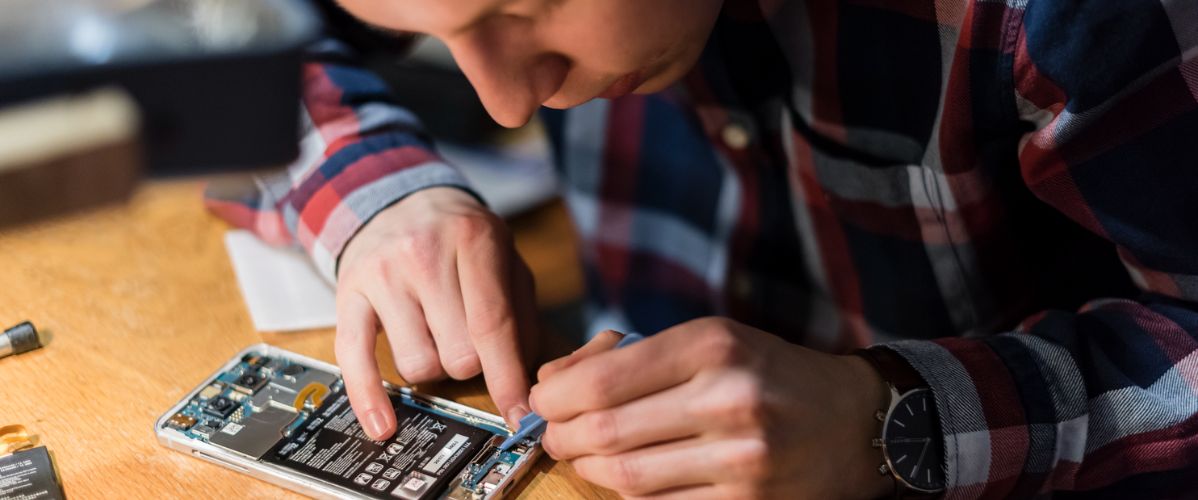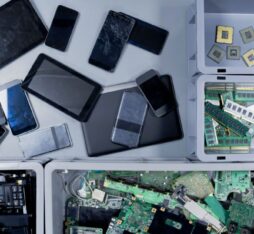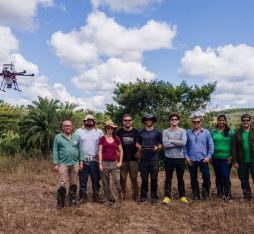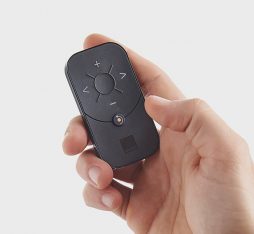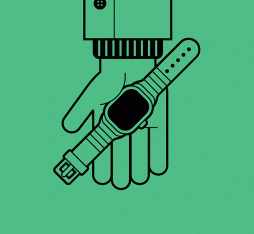• Biodegradable circuit boards, modular smartphones, low-impact components: Start-ups and major groups are increasingly offering solutions.
• At Orange, eco-design plays a major role in a circular economy strategy that will structure the group’s green transition: from box design to awareness raising among in-house teams.
Will integrated circuits of the future simply be printed on paper with water? Researchers at the University of Chicago have invented an eco-friendly microfabrication method that replaces toxic chemicals with water and paper. Drawing inspiration from the manner in which geckos adhere to surfaces, the team has succeeded in transferring carbon-based integrated circuits onto biodegradable materials. Their innovation could soon revolutionize the production of disposable medical sensors and other wearable devices.
Traditional microfabrication of the integrated circuits found in most electronic devices, which relies on a process called photolithography to create layers of microscopic patterns on silicon wafers, makes extensive use of toxic chemicals. This is just one of a number of headaches for manufacturers who are hoping for the advent of more sustainable electronics to reduce their carbon footprint. Some of the difficulties they face may soon be addressed by eco-design initiatives, which for some years, have been investigating various strategies to reduce the environmental impact of electronic devices, notably the use of more energy-efficient components and the optimization of circuits to minimize power consumption.
Eco-design is not just about electronic devices, it also needs to structure services and marketing
Boosting eco-design initiatives
According to a 2024 PwC survey, 46% of consumers say they are now buying more sustainable products, and electronics industry players are eager to address their growing concerns about the environment, notably the British start-up Jiva Materials which is producing biodegradable circuit boards and Fairphone, a manufacturer of long-lasting and easy-to-repair smartphones. However, product sustainability is only one aspect of a larger picture. “Eco-design is not just about electronic devices, it also needs to structure services and marketing offers,” explains Orange CSR Programme & Strategic Marketing Manager Yves Boillot. Extending beyond the realm of materials, the philosophy of eco-design aims to take into account every aspect of a product’s life cycle. Nearly five years ago in its Engage 2025 strategic plan, Orange committed to a number of ambitious goals that included the widespread adoption of eco-design principles for products sold under its brand, the promotion of attractive repair services and greater sales of refurbished handsets. “Being part of an eco-design process is a means objective,” explains Yves Boillot, who adds that it is still difficult to strictly define an eco-designed product.
Stepping back from the “linear economy”
In every country where the group is present, Orange encourages local teams to innovate. “We challenge countries on eco-design, for example to develop low-energy boxes or to design boxes with recycled materials.” The focus is on reducing carbon emissions and dependence on critical metals. Orange does not directly manufacture its own equipment, but acts as a specifier, distributor and end-of-life manager: “We’re still in a very linear economy, with conflicting imperatives: for example, there may be a need to sell more new equipment to satisfy marketing and a drive to encourage customers to extend the useful life of their smartphones.”
In a large group, raising awareness among in-house teams, particularly buyers and marketers, is essential. Via Orange Campus, the group provides training courses and some of these initiatives are presented to the executive team. “Five years ago, people thought the circular economy was about recycling. Today, you could say that recycling is something that is only done as a last resort. Eco-design, upstream of the life cycle, is at the heart of the circular economy approach.” Changes to business models are key to the implementation of circularity, explains Yves Boillot: “For example, widespread leasing and not just of boxes would make it possible to extend the useful life of customer equipment.” The circular economy, he concludes, is a resilient model that can withstand supply issues and sustain geopolitical sovereignty: “It’s a prerequisite for economic sustainability.”
Read more :
Net zero carbon by 2040 | Orange
Référentiel général d’écoconception de services numériques (RGESN) – 2024 (French General Digital Services Ecodesign Reference)
The role of product design in advancing the circular economy of electric and electronic equipment
 Yves Boillot
Yves Boillot

